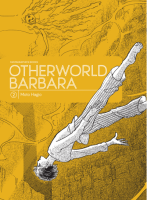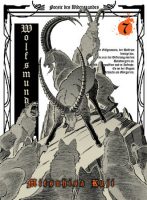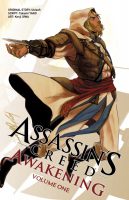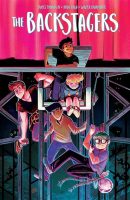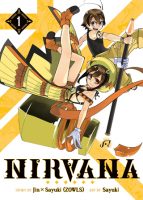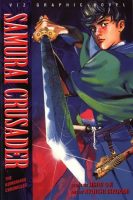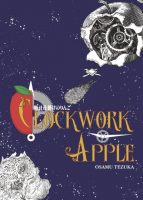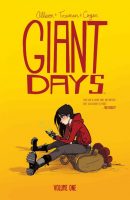My News and Reviews
Last week I took a short family vacation so I wasn’t really online much, but I did announce the winner of the Vertical Comics giveaway before disappearing to the land of limited Internet. The post also includes a list of the manga that have been released (or will soon be released) by Vertical’s manga- and anime-related imprint, Vertical Comics. I’ve been pretty busy over the last few weeks, so I’m sure that I’ve missed out on plenty of news and announcements. Do let me know if there’s something that I should really be paying attention to or need to catch up on!
Quick Takes
 Kigurumi Guardians, Volume 1 by Lily Hoshino. I actually haven’t read very many of Hoshino’s manga despite a fair number of them having been translated into English. Hoshino is probably best known as a creator of boys’ love manga, although she was also notably the character designer for Manwaru Penguindrum and her seinen series Otome Yokai Zakuro received and anime adaptation in 2010. Kigurumi Guardians is Hoshino’s most recent series, a prettily drawn but rather strange shoujo manga when it comes down to its story. Hakka Sasakura is a pure-hearted middle school student who, along with two of her schoolmates, has been paired off with a living, breathing, giant stuffed animal which transforms into a beautifully handsome man and back when kissed. This, of course, is all in order to save, or at least protect, the world from creatures from another dimension which steal the hearts of humans. The charm of Kigurumi Guardians is largely derived from the fact that the series’ doesn’t take itself or its weird humor very seriously at all. On the other hand, it doesn’t seem to have much depth to it either. Or at least not yet. The ending scene of the first volume would seem to imply that there’s much more going on than might be initially assumed from the series’ inherent and deliberate goofiness.
Kigurumi Guardians, Volume 1 by Lily Hoshino. I actually haven’t read very many of Hoshino’s manga despite a fair number of them having been translated into English. Hoshino is probably best known as a creator of boys’ love manga, although she was also notably the character designer for Manwaru Penguindrum and her seinen series Otome Yokai Zakuro received and anime adaptation in 2010. Kigurumi Guardians is Hoshino’s most recent series, a prettily drawn but rather strange shoujo manga when it comes down to its story. Hakka Sasakura is a pure-hearted middle school student who, along with two of her schoolmates, has been paired off with a living, breathing, giant stuffed animal which transforms into a beautifully handsome man and back when kissed. This, of course, is all in order to save, or at least protect, the world from creatures from another dimension which steal the hearts of humans. The charm of Kigurumi Guardians is largely derived from the fact that the series’ doesn’t take itself or its weird humor very seriously at all. On the other hand, it doesn’t seem to have much depth to it either. Or at least not yet. The ending scene of the first volume would seem to imply that there’s much more going on than might be initially assumed from the series’ inherent and deliberate goofiness.
 Oresama Teacher, Volumes 1-6 by Izumi Tsubaki. I absolutely adore Monthly Girls’ Nozaki-kun, so while waiting for new volumes in that series to be released I figured it was about time that I finally gave another of Tsubaki’s manga a try. And because as far as I know Tsubaki only has three series (all of which are available in translation), my choices came down to The Magic Touch and Oresama Teacher. Although I’ll probably still read The Magic Touch at some point, ultimately I decided to pursue Oresama Teacher first, mostly because I have a huge soft spot for delinquents in Japanese popular culture. I really should have picked up the series much sooner; I’m loving the manga and its tremendous heart. I find Tsubaki’s sense of humor in Oresama Teacher to be similar to that in Monthly Girls’ Nozaki-kun–played fairly straight while still being completely ridiculous with a cast filled with incredibly endearing characters. Granted, some of them can be pretty asshole-ish at times, too. The plot wanders around a fair bit, mostly for comedy’s sake, but the series generally follows Mafuyu Kurosaki, an ex-gang leader who is attempting to clean up her act by transferring schools and trying to become a “normal” high school girl. This proves to be rather difficult when her homeroom teacher and newfound friends all have pasts as troublemakers, too.
Oresama Teacher, Volumes 1-6 by Izumi Tsubaki. I absolutely adore Monthly Girls’ Nozaki-kun, so while waiting for new volumes in that series to be released I figured it was about time that I finally gave another of Tsubaki’s manga a try. And because as far as I know Tsubaki only has three series (all of which are available in translation), my choices came down to The Magic Touch and Oresama Teacher. Although I’ll probably still read The Magic Touch at some point, ultimately I decided to pursue Oresama Teacher first, mostly because I have a huge soft spot for delinquents in Japanese popular culture. I really should have picked up the series much sooner; I’m loving the manga and its tremendous heart. I find Tsubaki’s sense of humor in Oresama Teacher to be similar to that in Monthly Girls’ Nozaki-kun–played fairly straight while still being completely ridiculous with a cast filled with incredibly endearing characters. Granted, some of them can be pretty asshole-ish at times, too. The plot wanders around a fair bit, mostly for comedy’s sake, but the series generally follows Mafuyu Kurosaki, an ex-gang leader who is attempting to clean up her act by transferring schools and trying to become a “normal” high school girl. This proves to be rather difficult when her homeroom teacher and newfound friends all have pasts as troublemakers, too.
 Manga in America: Transnational Book Publishing and the Domestication of Japanese Comics by Casey Brienza. Relatively few academic writings have been specifically devoted to the North American manga industry; so far, Manga in America is both the first and only book-length work to tackle the subject. Although it was published in 2016, Manga in America was originally written in 2012. There have been some significant changes and developments in the United States manga industry since then, but the book is still an informative and valuable ethnographic study. A significant portion of the volume and Brienza’s research was informed by a series of confidential, in-depth interviews that were conducted with seventy people who had experience working within the industry. Manga in America is undoubtedly the most comprehensive look at the North American manga industry that I’ve seen in a single volume, providing insight into all aspects of what Brienza terms the “domestication” of manga. Licensing, translation, editing, sales, design, and more are all addressed as is the historical context of the industry and possible future developments. Overall, Manga in America is accessible to a general audience although some sections will likely be more interesting or meaningful to readers with some familiarity with sociology.
Manga in America: Transnational Book Publishing and the Domestication of Japanese Comics by Casey Brienza. Relatively few academic writings have been specifically devoted to the North American manga industry; so far, Manga in America is both the first and only book-length work to tackle the subject. Although it was published in 2016, Manga in America was originally written in 2012. There have been some significant changes and developments in the United States manga industry since then, but the book is still an informative and valuable ethnographic study. A significant portion of the volume and Brienza’s research was informed by a series of confidential, in-depth interviews that were conducted with seventy people who had experience working within the industry. Manga in America is undoubtedly the most comprehensive look at the North American manga industry that I’ve seen in a single volume, providing insight into all aspects of what Brienza terms the “domestication” of manga. Licensing, translation, editing, sales, design, and more are all addressed as is the historical context of the industry and possible future developments. Overall, Manga in America is accessible to a general audience although some sections will likely be more interesting or meaningful to readers with some familiarity with sociology.


